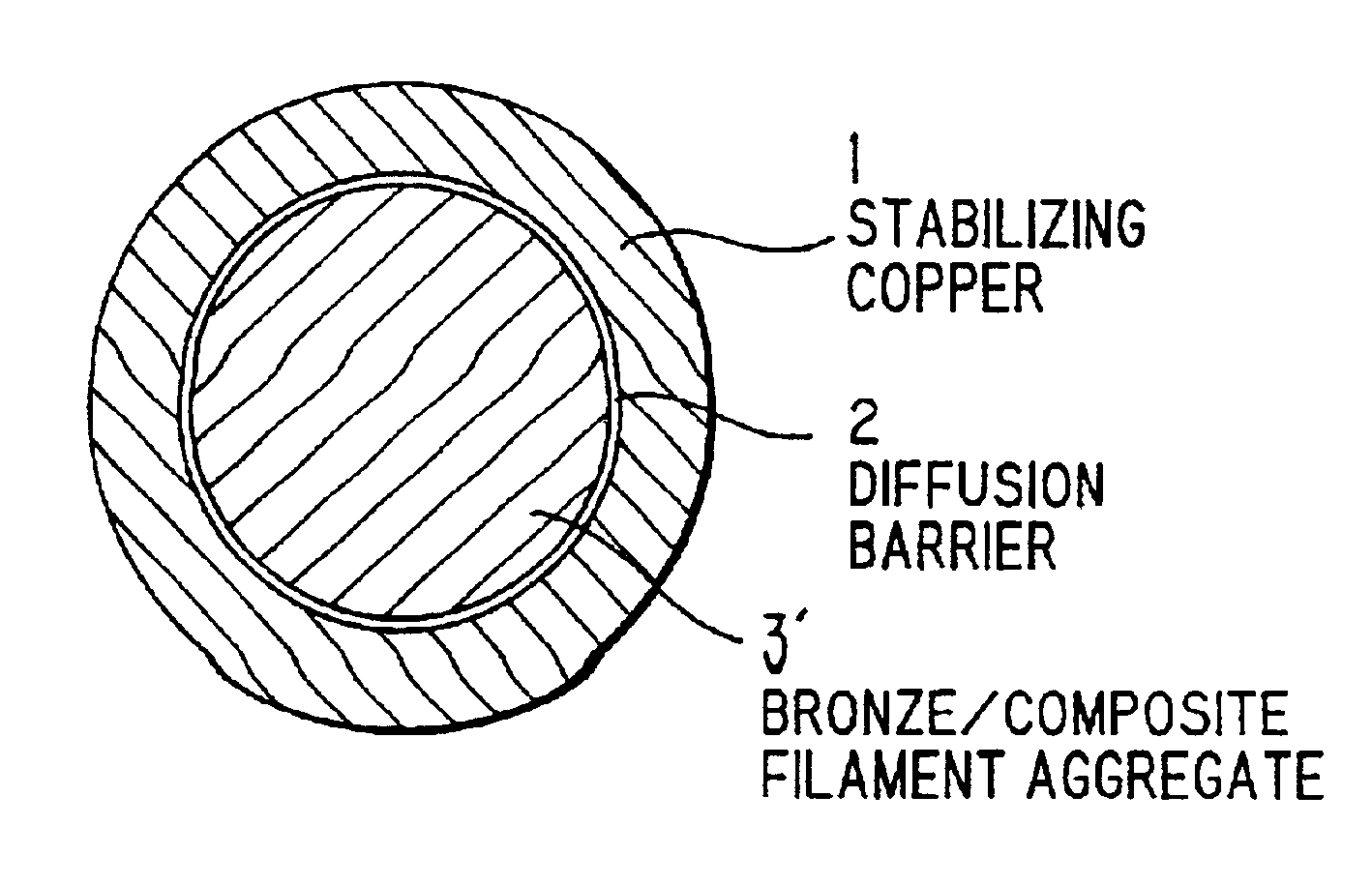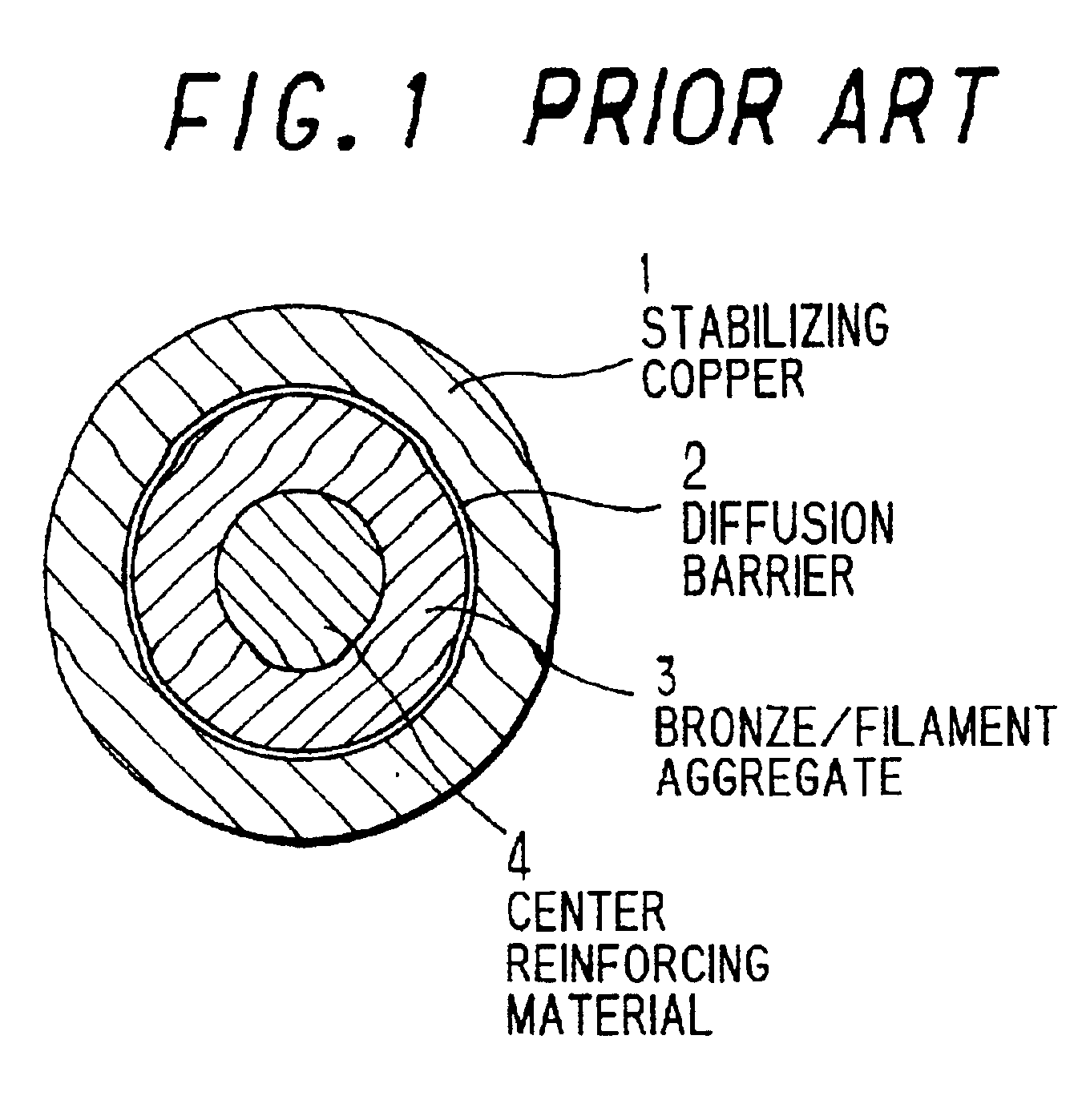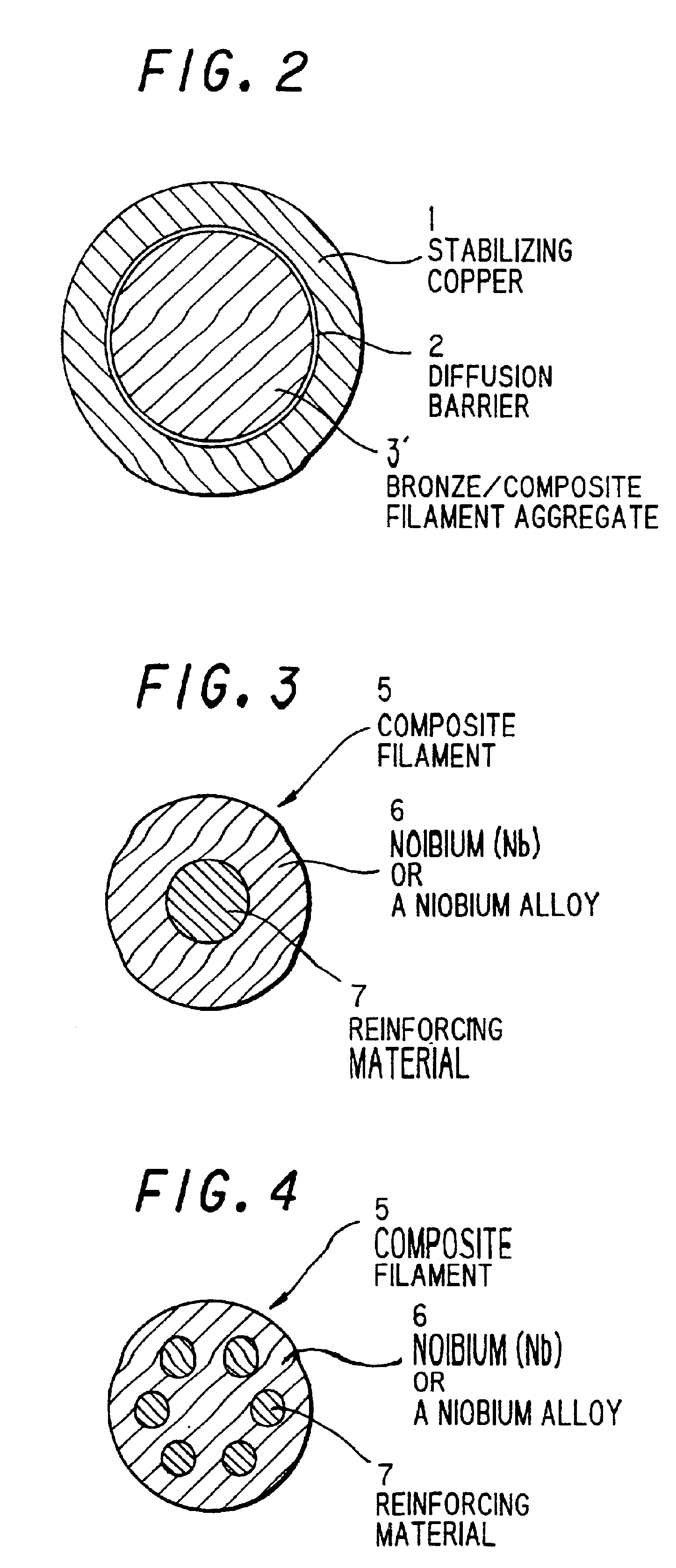Nb3Sn-system superconductive wire
a superconductive wire and system technology, applied in the field of nb3sn-based superconductive wires, can solve the problems of complex design in view of change of wire properties due to electromagnetic force, mechanical strain, and deterioration of critical current properties by mechanical strain
- Summary
- Abstract
- Description
- Claims
- Application Information
AI Technical Summary
Benefits of technology
Problems solved by technology
Method used
Image
Examples
example 1
Industrial pure Ta was used as a filament reinforcing material in composite filament, the diameter of the filament reinforcing material when the wire got the final wire diameter was 2 μm for an outer diameter of the composite filament of 5 μm. The volume fraction of the filament reinforcing material in the composite filament was 0.16. A niobium (Nb)-1 wt % tantalum (Ta) alloy was used as a filament substrate material and a copper (Cu)-14.5 wt % tin (Sn)-0.3 wt % titanium (Ti) was used as a copper (Cu)-tin (Sn)-based alloy matrix. Industrial pure Ta was used a diffusion barrier, and the thickness thereof was about 19 μm. The volume ratio of non-stabilizing copper parts to a stabilizing copper part (stabilizing copper ratio) was controlled to about 1.
examples 2 and 3
Wires were produced in the same manner as in Example 1 except that the volume fractions of a filament reinforcing material in a composite filament were 0.40 and 0.59, respectively, in Example 1.
PUM
| Property | Measurement | Unit |
|---|---|---|
| Diameter | aaaaa | aaaaa |
| Fraction | aaaaa | aaaaa |
| Pressure | aaaaa | aaaaa |
Abstract
Description
Claims
Application Information
 Login to View More
Login to View More - R&D
- Intellectual Property
- Life Sciences
- Materials
- Tech Scout
- Unparalleled Data Quality
- Higher Quality Content
- 60% Fewer Hallucinations
Browse by: Latest US Patents, China's latest patents, Technical Efficacy Thesaurus, Application Domain, Technology Topic, Popular Technical Reports.
© 2025 PatSnap. All rights reserved.Legal|Privacy policy|Modern Slavery Act Transparency Statement|Sitemap|About US| Contact US: help@patsnap.com



